Raspberries grow in one place for many years and do not require frequent replanting. But after 10 - 15 years, the supply of nutrients in the soil becomes scarce, and there are many pests and diseases. As a result, yields drop significantly, plants begin to get sick, and sooner or later the raspberries have to be transplanted to a new place.
|
In order for raspberries to always please you with high yields, they must be replanted to another place from time to time. |
Why replant raspberries to another place?
Raspberries can grow in one place for 6-10 years. On humus-rich soils, the berry bears fruit well for 12-15 years. As plantings age, their number of shoots and yield simultaneously decrease.
Main reasons for transplantation.
- Old plantings. The crop grows and bears fruit poorly. If raspberries grow in a limited space, then the roots intertwine, produce few basal shoots and shoots, and have nowhere to grow. And although the bush seems healthy and powerful, it has nowhere to develop further. To develop, culture needs a lot of free space so that there is room to grow.
- Soil depletion. This happens more often with remontant varieties. They carry much more nutrients than traditional raspberries. Soil depletion can occur when cultivating on poor, low-productivity, uncultivated lands. It can occur long before the degeneration of plantings. Fertilizing on such soils brings little results. Such lands are first cultivated for 2-3 years, increasing their fertility, and then raspberries are planted. But since the soils are poor, the supply of nutrients runs out after 3-5 years and is not completely restored by applying fertilizers. Therefore, raspberries are transplanted to a new location more often.
- Severe damage by diseases and pests. Since both pests and diseases persist in the ground, it is sometimes easier to transplant raspberries to a new place than to fight them in the same place.
When raspberries are grown in one place for a long time, the bushes begin to be affected by diseases and pests.
- Close standing groundwater. Raspberries do not tolerate drought well, but paradoxically, when there is excess moisture, their root hairs die off. It will grow, but it will be stunted and stunted, and there will be no harvest at all. Remontant varieties are especially sensitive to this. Therefore, if you choose the wrong place for raspberries, they urgently need to be replanted.
- The appearance of dense shadow in plantings. If a shadow appears (for example, during the construction of a house or as a result of an overgrown tree crown), then transplantation to a sunnier place is required. With strong shading, fruiting sharply decreases, or even stops altogether, the shoots become very elongated, becoming long and thin. But we are only talking about thick shadow. Raspberries easily tolerate partial shade.
- A neglected plot. If you do not take care of it regularly, it turns into impenetrable thickets, and in addition, it becomes overgrown with weeds. Sometimes it is better to replant raspberries from such a plot than to tidy up the existing ones.
- Breeding certain varieties. It is better to grow each variety in a separate row or clump. When growing all varieties in one plot, there is always the possibility of taking a seedling from the wrong variety.
These are all reasons to transplant the raspberry tree to a new location. But usually summer residents simply apply fertilizer and continue to grow raspberries in one place for decades, regularly renewing the berry garden.
To understand whether a transplant is required or not, you need to look at the condition of the raspberries.If the yields begin to decline, the berries become smaller, the shoots become few and small, a replanting is required. If the yield is high, the berries are large, the shoots are powerful, and the shoots spread far from the mother plant, replanting is not required, even if the crop has been growing in one place for many years.
Timing for transplanting raspberries
Raspberries can be replanted throughout the season, but the best time is autumn. It is advisable to replant it on a warm, cloudy day. On sunny days, transplantation is carried out only in the evening.
Features of autumn transplantation
Transplant times vary in different regions. In the northwest, in the middle zone and in the Far East, this is September. In the southern regions - October to mid-November. In the Urals and Siberia - from August to mid-September.
The main rule when replanting in autumn is to have time to do it at least 30 days before the onset of cold weather.
Remontant raspberries are also replanted in the fall. In September, all flowers and ovaries are removed from the branches and replanted. If the shoot takes root, it begins to produce new leaves and even tries to bloom. Buds and flowers are removed in a timely manner.
Transplanting raspberries in spring
In the middle zone this is mid-May, in the south - late March-early April, in the Urals and Siberia - May.
In spring, it is better to transplant raspberries before the buds open. But the earth must be warmed up to at least +12°C.
Experience shows that before the leaves bloom, the survival rate of seedlings is almost 100%. When the leaves have already blossomed, only 40-50% of raspberry seedlings take root.
In spring, there is enough moisture in the soil and quite warm for good survival of the crop. If it is necessary to transplant blossoming seedlings, all leaves are torn off, they are heavily shaded and given abundant daily watering.If the spring is rainy, then watering is done as needed, and the soil around the young shoots is loosened.
|
In spring, raspberries need to be transplanted early, before the buds open. |
Don't forget to read:
Summer transfer
Raspberries can only be replanted in summer if absolutely necessary. Vegetating plants take a long time to take root. From my own experience, I will say that in the summer 1-2 plants out of 10 take root. If a summer transplant is necessary, then it is better to do it in late July-early August, but not during the flowering and fruiting period.
In summer, only young shoots are replanted. Mature raspberry bushes cannot be divided or dug up entirely; they will die anyway. The powerful root system of an adult plant will not be able to function normally in soil where there is not enough moisture at this time. Yes, besides, the above-ground part is growing at this time and requires moisture, and the roots cannot provide it in full.
Before transplanting, the plot is watered very abundantly. All leaves are removed from the selected shoots, they are dug up with as large a lump of earth as possible, trying to minimally injure the root system. After planting, the shoot is shaded. Shading is left until the seedling takes root. If you remove the shading earlier, the plant may dry out.
Transplantation is carried out only in the evening and, preferably, in cloudy weather. In dry and hot weather, the seedling is buried in the shade, and planted in a permanent place in the fall.
Raspberry transplant technology
You can replant both root shoots and adult raspberry bushes. If adult plants are used as planting material, then choose healthy, well-developed and abundantly fruiting bushes.They can be divided, thus obtaining more planting material.
Selection of seedlings and preparing them for transplantation
Well-developed shoots are selected, with healthy stems without cracks, at least 1 cm thick, without signs of damage by diseases and pests. On the day of transplantation, the seedlings are shortened to 40-50 cm, all leaves are torn off. They are watered well in the morning and replanted in the evening.
When replanting a bush, it is also shortened to 50 cm and the remaining leaves are removed. Shoots are always shortened, regardless of the time of transplantation.
|
For transplantation, only healthy, strong seedlings with a well-developed root system are used. |
Don't forget to read:
How to properly feed raspberries in spring, summer and autumn ⇒
Selecting a location
The ideal place to plant raspberries is in a well-lit area in the morning and afternoon and shaded at midday. Plantings must be protected from cold northern winds, drafts, any strong winds (otherwise the shoots will lie down or break), and flooding.
It is not advisable to plant raspberries:
- after strawberries (they have common pests);
- in places where raspberries had previously grown for a long time, especially remontant ones (the soil is depleted);
- next to currants, especially black ones; these berry growers don’t really like each other, and raspberries often sprout under currant bushes.
Preparing the planting hole
The application of fertilizers depends on the time of planting and on the type of seedlings: with a closed or open root system.
When planting raspberries with a closed root system Rotted manure (a bucket per planting hole) or even fresh manure is added to the planting hole, filling it in at least 10 cm (1/2-1/3 of a bucket), as well as mineral fertilizers: 1 tbsp. superphosphate and potassium sulfate.The root system of plants is protected by the soil and is not damaged by fertilizers during growth.
When planting seedlings with an open root system Only decomposed manure can be added to the planting hole.
Determining the degree of decomposition of manure is simple: if there are earthworms in it, then it has decomposed, and the roots will not get burned when they come into contact with it. If there are no worms, then the degree of decomposition is insufficient, and the roots may get burned if they come into contact.
|
When transplanting raspberries, use only well-decomposed manure |
Do not miss:
Add half a bucket of humus, mixing it with the soil, but not covering it. Nothing else is added to the planting hole, since the roots get burned when they come into contact with the fertilizer and the plant dies.
When planting raspberries with an open root system in the fall, it is possible to apply fertilizers and ash with their deep embedding into the soil (12-15 cm). When planting in autumn, the root system of the berry will not develop very quickly and will only reach the fertilizer layer by the end of next summer.
Brushwood is placed at the bottom of the planting hole. It provides additional drainage, and, in addition, raspberries in natural conditions often grow on dead wood.
Transplanting raspberry seedlings
Seedlings are dug up, trying to injure the roots as little as possible. Place the shovel vertically and dig up the plant from all sides. If you place the shovel at an angle, a large number of roots under the seedling are damaged. After digging in, the shoot is dug up from below and removed from the ground, trying to keep the earthen lump on the roots.
Inspect the roots. They should be healthy, brown, elastic, fibrous, at least 25-30 cm long.All shoots that do not meet these requirements are removed, even if their aerial parts are good.
Ready seedlings are planted immediately, avoiding weathering of the roots. When planting, the root collar can be deepened by 2-3 cm. If it is deepened too much, the young shoots will take a long time to break through and become thin and weak.
|
If necessary, the excavated planting material is divided into shoots. |
Along with the shoots, parts of the roots are also dug up. This is additional planting material. They can be planted at a depth of 8-10 cm and watered daily. Such root segments produce good shoots. They can be used either as material for producing seedlings, or placed in the main plot. After 2 years, they form full-fledged bushes.
After planting, the seedlings are watered. Further watering is carried out daily, and in hot weather twice a day - in the morning and in the evening. In autumn, young plants are shaded for the first 2-4 days, and then the shade is removed. At other times, seedlings are shaded until a new leaf appears. But shading does not have to be complete shading. Diffused light should fall on the seedling; direct sun is undesirable.
After transplantation, no additional feeding is done. Seedlings must first form a complete root system. Raspberry roots are very delicate and sensitive; if you feed them before they have grown, they can be burned. Then the plant will either die or be weakened.
When transplanting raspberries with a closed root system, they are not buried. There is also no need to shade or pick off leaves. The shoot is already adapted to external conditions, and its root system is quite developed.
|
But if the roots are tightly entwined with an earthen lump, then they are removed along with part of the earth, thereby exposing the root system. Such plants are planted as bare-rooted seedlings. It is necessary to remove entwining roots; they are unproductive, practically do not grow and prevent the main mass from developing properly. |
Transplanting remontant raspberries
Typically, remontant raspberries are replanted in the fall. The shoots are shortened to 10-15 cm, but the roots should be well developed. Planting is carried out 1-1.5 months before the onset of cold weather. If the raspberries have taken root and started to produce shoots, they are cut out. Sometimes the shoot is left for the winter, bent to the ground. However, if the raspberries have taken root and begin to produce shoots, they mow them down, leaving only the roots to overwinter.
Rema can be replanted in the spring, but during the season, remove new shoots and buds that appear. Only in the second half of summer are 2-3 shoots left for further formation of the bush. But in spring the survival rate is worse, the shoots are actively growing, and the still undeveloped root system cannot meet the needs of the above-ground part. As a result, the seedlings either die, or their development and the beginning of fruiting are delayed for 2 years.
Conclusion
Transplanting raspberries is not a difficult task. But nuances are very important here, without which the survival rate of a culture declines sharply.
You might be interested:
- Raspberries in autumn: planting, replanting, pruning ⇒
- How to treat raspberries against diseases ⇒
- How does a raspberry tree differ from a regular raspberry and how to care for it ⇒
- Description of the best varieties of remontant raspberries with photos and reviews ⇒
- Planting and caring for garden blackberries at your summer cottage ⇒
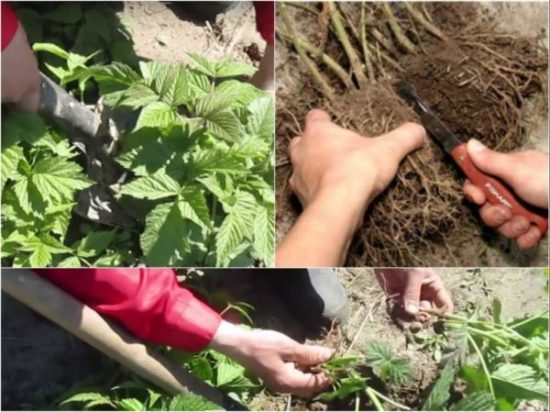
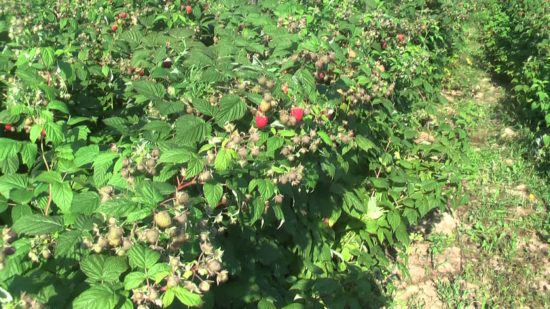
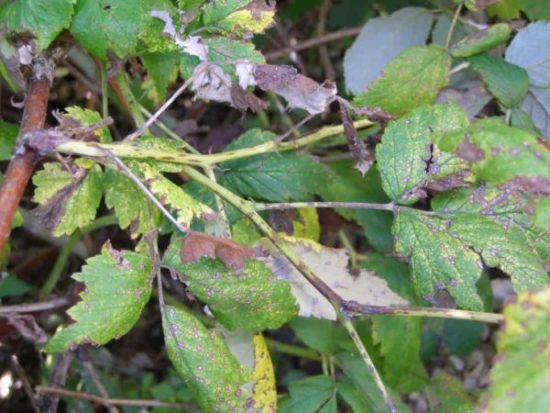
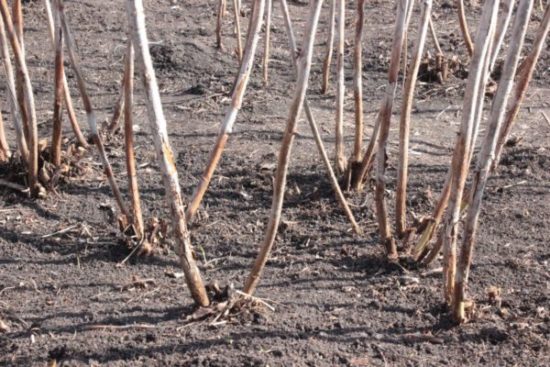
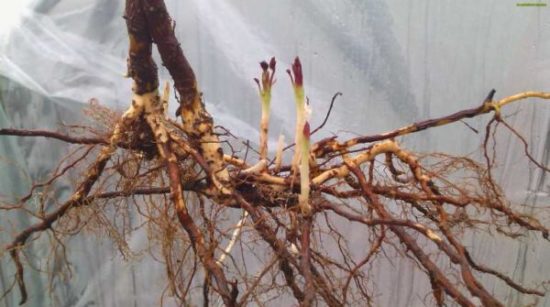
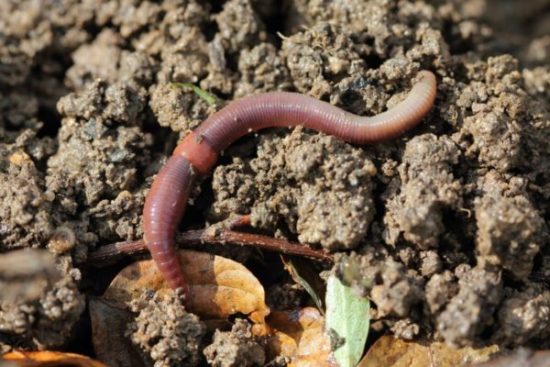


 CUCUMBERS NEVER GET SICK, I'VE BEEN USING ONLY THIS FOR 40 YEARS! I SHARE A SECRET WITH YOU, CUCUMBERS ARE LIKE THE PICTURE!
CUCUMBERS NEVER GET SICK, I'VE BEEN USING ONLY THIS FOR 40 YEARS! I SHARE A SECRET WITH YOU, CUCUMBERS ARE LIKE THE PICTURE! You can dig a bucket of potatoes from each bush. Do you think these are fairy tales? Watch the video
You can dig a bucket of potatoes from each bush. Do you think these are fairy tales? Watch the video
 How our fellow gardeners work in Korea. There is a lot to learn and just fun to watch.
How our fellow gardeners work in Korea. There is a lot to learn and just fun to watch. Eye trainer. The author claims that with daily viewing, vision is restored. They don't charge money for views.
Eye trainer. The author claims that with daily viewing, vision is restored. They don't charge money for views. A 3-ingredient cake recipe in 30 minutes is better than Napoleon. Simple and very tasty.
A 3-ingredient cake recipe in 30 minutes is better than Napoleon. Simple and very tasty. Therapeutic exercises for cervical osteochondrosis. A complete set of exercises.
Therapeutic exercises for cervical osteochondrosis. A complete set of exercises. Which indoor plants match your zodiac sign?
Which indoor plants match your zodiac sign? What about them? Excursion to German dachas.
What about them? Excursion to German dachas.